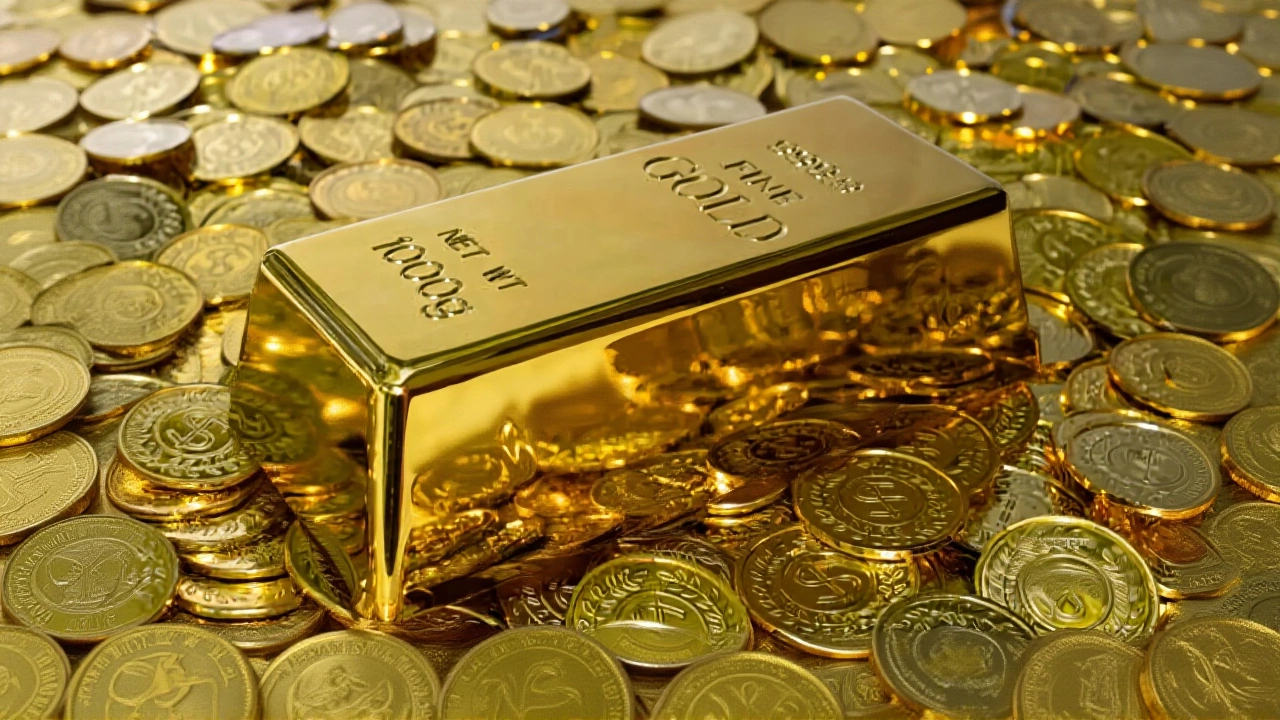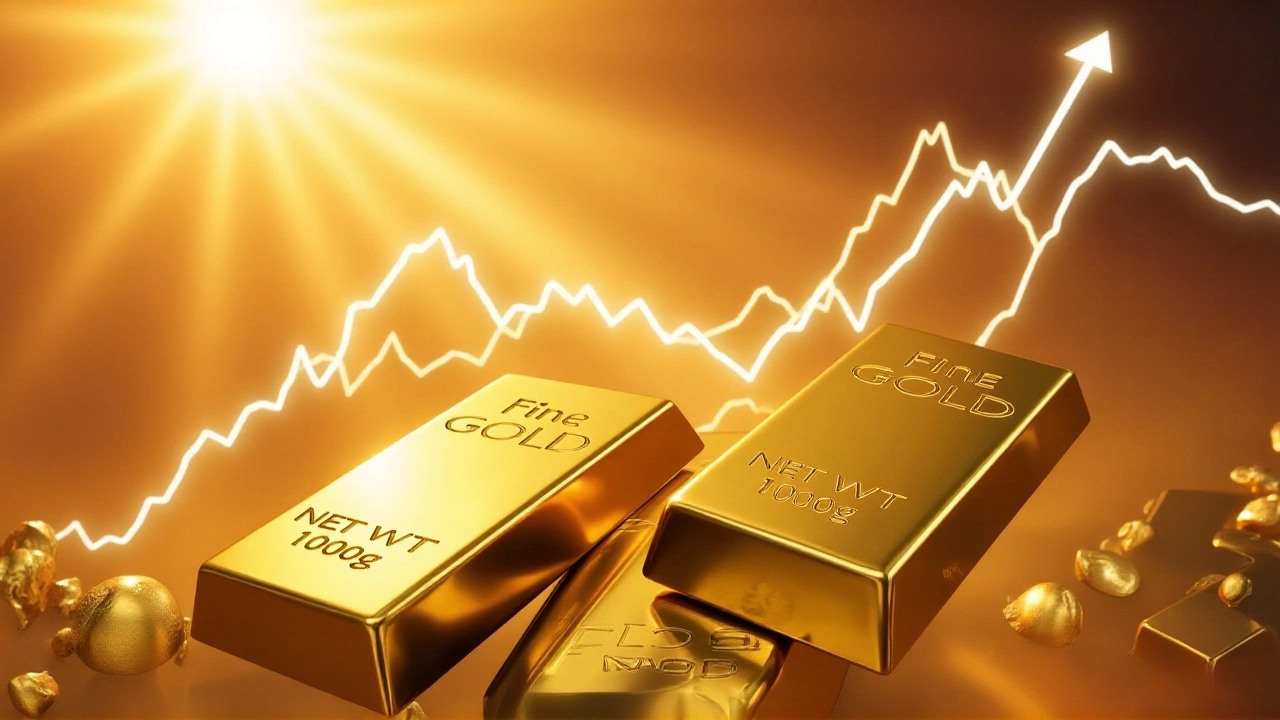On October 15, 2025, Jerome Powell, chair of the Federal Reserve, signaled a possible 0.25‑percentage‑point rate cut later this month, and the gold price surged past $4,200 an ounce for the first time. The market opened at $4,217.95, a fresh record, before settling around $4,200.12 by 12:02 GMT, up roughly 1.4 % on the day.
Background: Gold’s Year‑to‑Date Surge
Since the start of 2025, gold has rallied about 59 % in US dollars, driven by geopolitical jitters and a wobbling US dollar. Central banks worldwide have been net buyers, while exchange‑traded funds (ETFs) poured record inflows into the metal. In India, the festive season of Diwali and Dhanteras amplified retail demand, pushing local spot prices to all‑time highs.
What Drove the $4,200 Breakout?
Analysts point to three converging forces:
- Monetary policy easing. Powell’s hint of a rate cut lifted bond prices, squeezed yields, and made non‑yields like gold more attractive.
- Supply‑side anxieties. Ongoing US‑China trade frictions and the looming US government shutdown have stoked fears of a broader economic slowdown.
- Currency weakness. The dollar index slipped below 100, reinforcing gold’s appeal as a hedge.
Ricardo Ivanjelista, senior analyst at ActiveTrades, told reporters, "The combination of a softening dollar, Fed dovishness, and heightened geopolitical risk is a perfect storm for gold. We expect the upward bias to stay in place for the next several weeks."

Reactions from Market Players
In New York, futures on the COMEX rose 1.3 % to $4,216.20 for December delivery. Meanwhile, on the Mumbai floor of the Multi Commodity Exchange of India (MCX), the 10‑gram gold contract hit ₹1,28,395, a new all‑time high.
Reliance Securities’ senior research analyst Jigar Trivedi said, "Investors are flocking to gold as a safe‑haven amid expectations of further fiscal stimulus in the US. The domestic market is seeing a similar surge, with the 99.9 % pure bar closing at ₹1,30,800 per 10 g."
Even the Indian Reserve Bank has been active, adding to its sovereign gold holdings, which has helped buttress the global market.
Implications for Investors
The breakout matters for three groups:
- Retail jewelry buyers. With gold already above ₹1.31 lakh per 10 g, many Indians may postpone purchases, waiting for a correction.
- Institutional investors. ETFs have already seen inflows exceeding $25 billion this year; a continued rally may tempt more allocation.
- Currency traders. A weaker dollar could keep the metal in favour, but any surprise hawkish move from the Fed could reverse the trend.
For the risk‑averse, holding physical gold or sovereign bonds may provide a cushion. For the aggressive, leveraged futures could deliver outsized returns – but remember the volatility.

Looking Ahead: Forecasts Through 2026‑2030
Two well‑known market forecasters, Vernika Brown and Quentin Mai, project gold could test $4,500 by mid‑2026 and possibly breach the $5,000 mark by 2030 if the current macro backdrop persists.
Brown warned, "While the price trajectory looks bullish, retail investors need to be mindful of affordability. Once gold pushes beyond $4,800, it becomes a niche asset for the ultra‑wealthy."
Mai added, "The crucial variable is US fiscal policy. If the next administration approves a substantial stimulus package, we could see inflationary pressures that keep real yields low, supporting gold’s rally."
In the short term, the market will watch for two key triggers: the official Fed rate‑cut announcement, expected in the last week of October, and the outcome of the US‑China trade talks slated for early November.
Frequently Asked Questions
How does the $4,200 gold level affect Indian jewelry buyers?
With spot gold hovering around ₹1.31 lakh per 10 g, many Indian consumers may delay big purchases, expecting a price dip. Retailers, however, are likely to offer limited‑time discounts or flexible financing to keep sales steady during the festive season.
What role did Jerome Powell’s comments play in the price jump?
Powell’s suggestion of an imminent 0.25 percentage‑point rate cut lowered Treasury yields, making gold’s non‑yielding return more attractive. The market interpreted his tone as dovish, prompting a swift reallocation into precious metals.
Are the current gold gains sustainable?
Analysts say the rally could persist if the Fed follows through with cuts, US‑China tensions remain high, and inflation stays above target. However, a surprise hawkish pivot or a rapid dollar recovery could trigger a correction.
What do experts predict for gold’s price by 2026?
Vernika Brown and Quentin Mai both forecast that gold could reach $4,500 by mid‑2026, with a longer‑term upside toward $5,000 if monetary easing continues and geopolitical risks stay elevated.
How are ETFs influencing today’s gold rally?
ETFs have accumulated over $25 billion in inflows this year, providing a steady demand floor. Their liquidity makes it easy for investors to add exposure quickly, reinforcing price gains whenever market sentiment turns risk‑averse.
